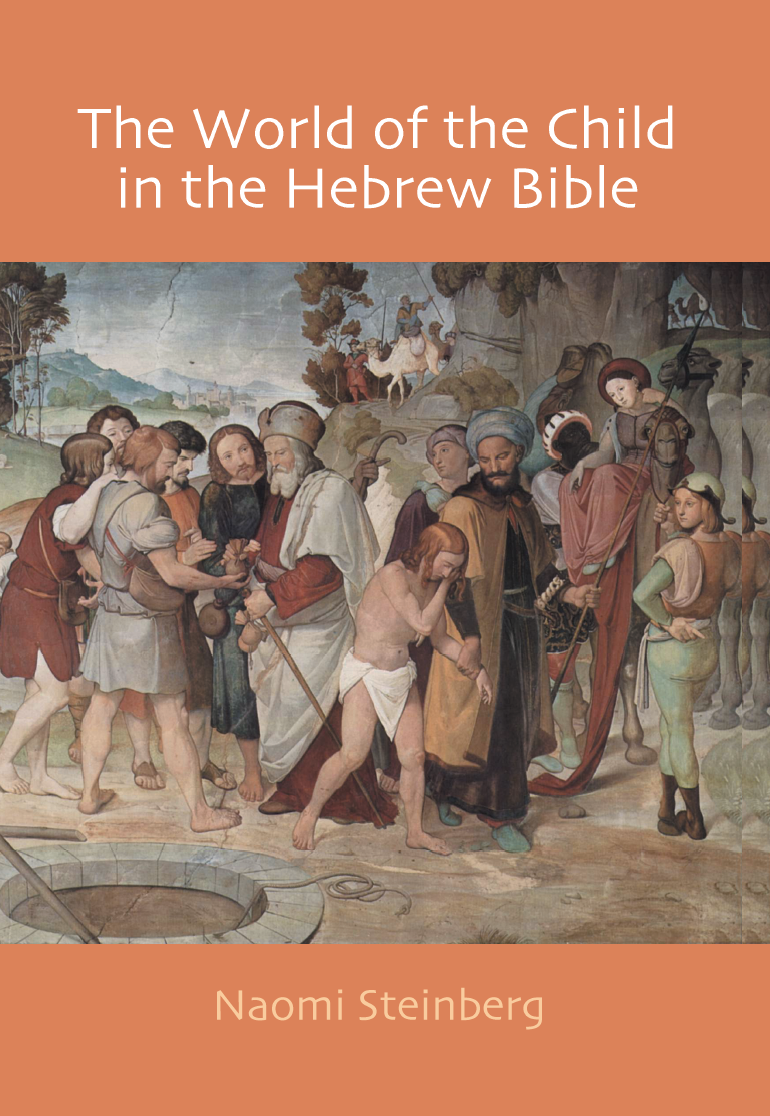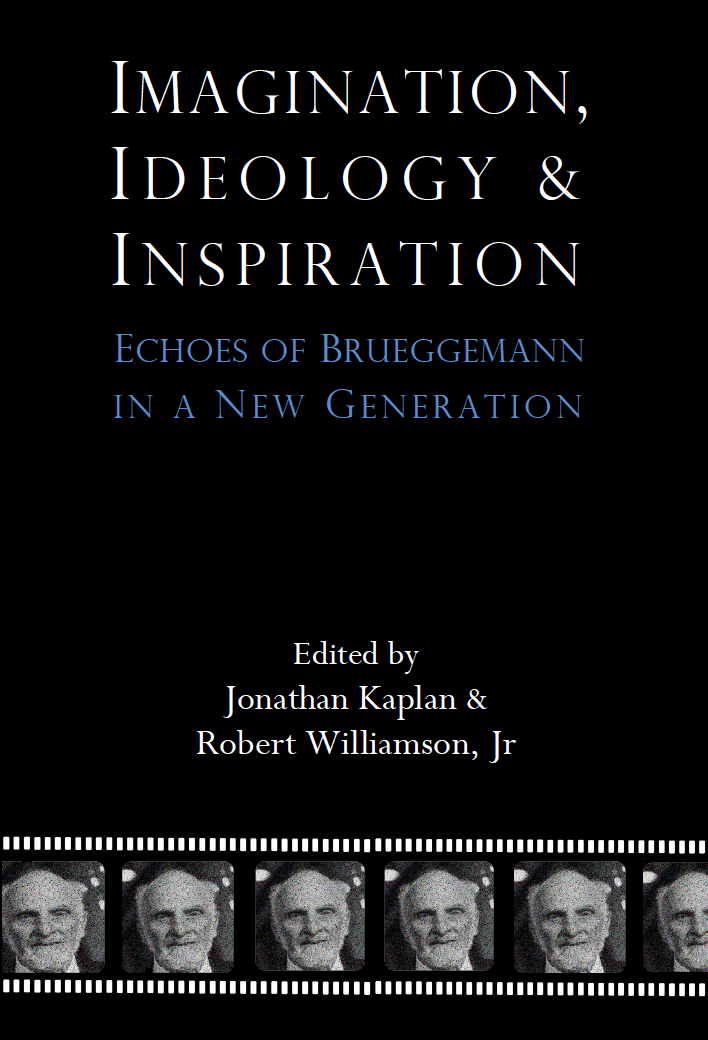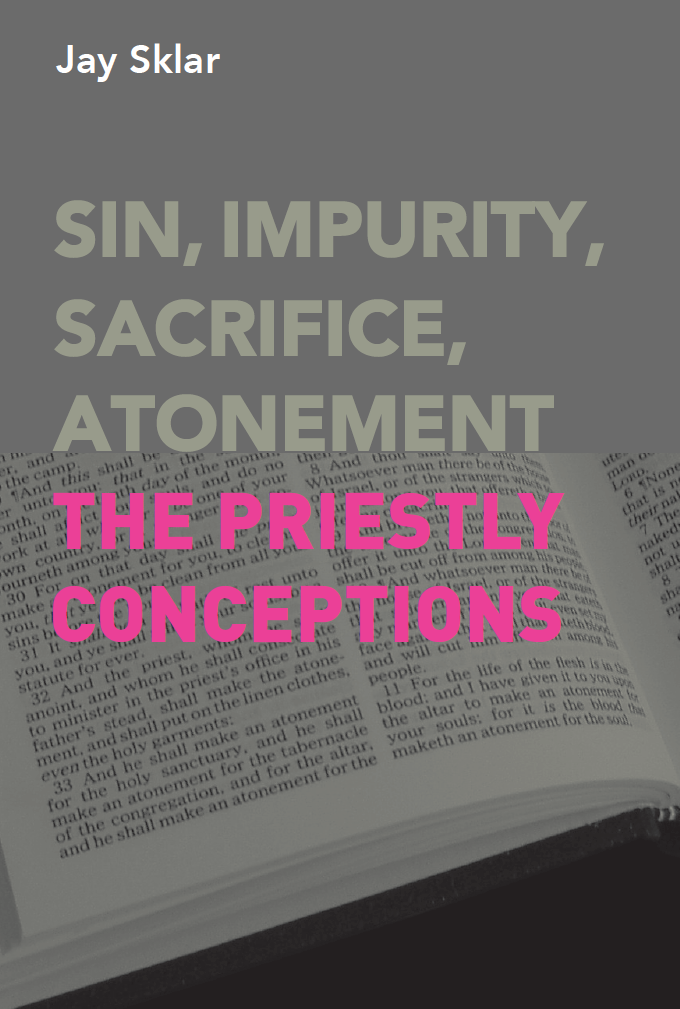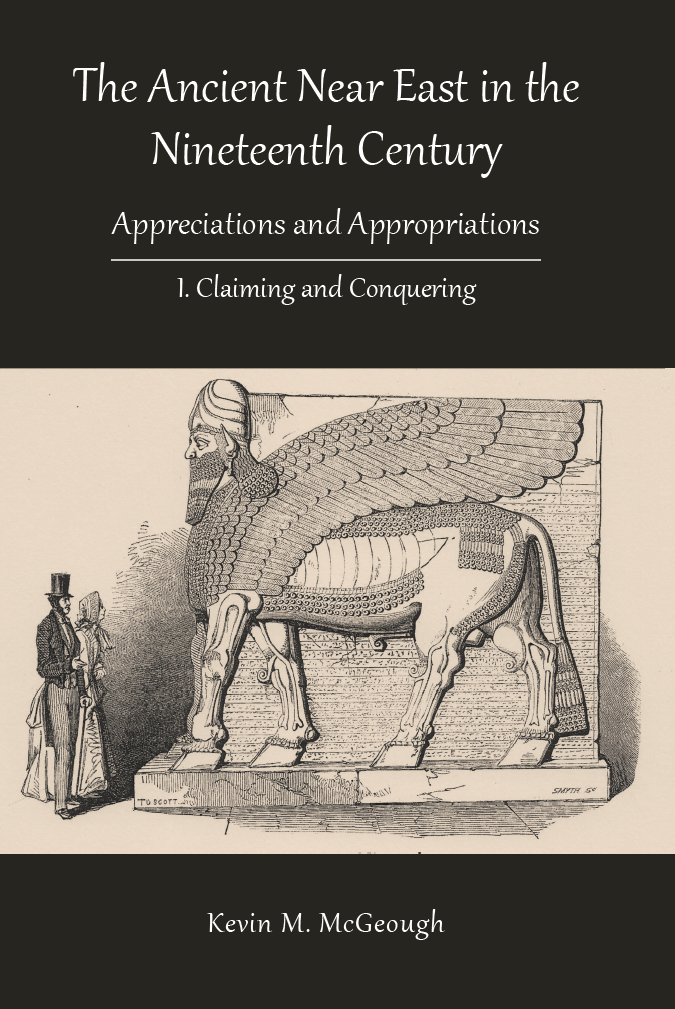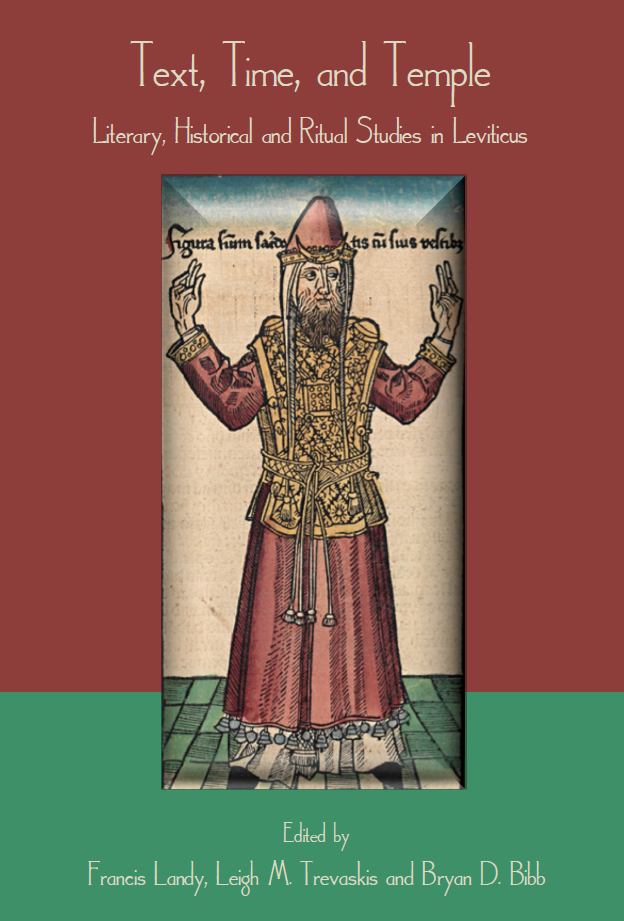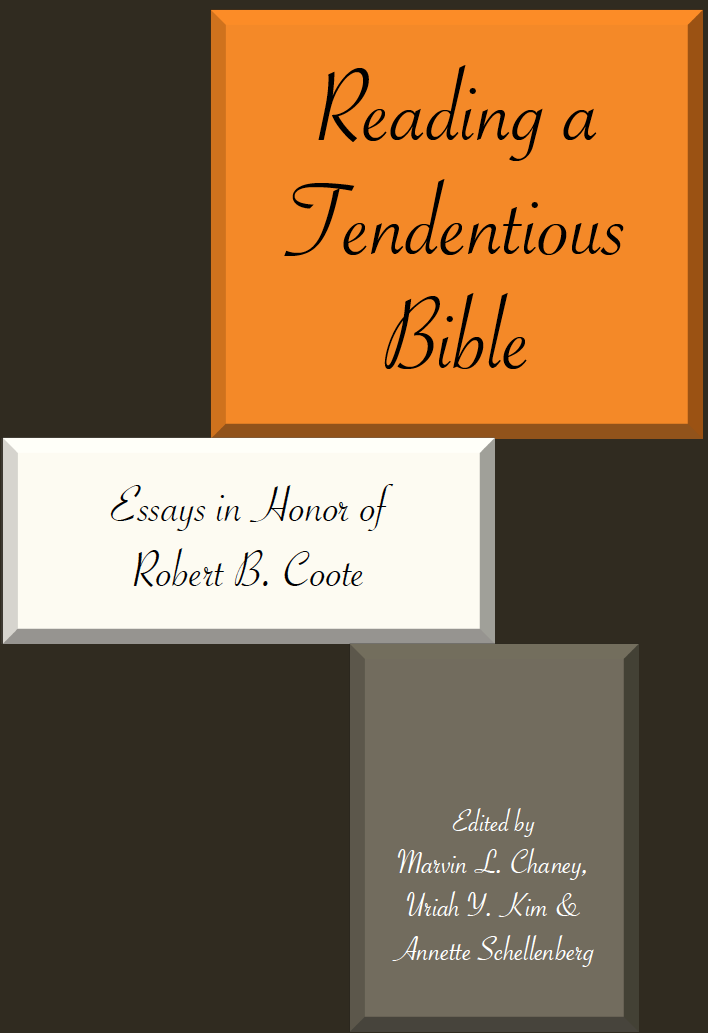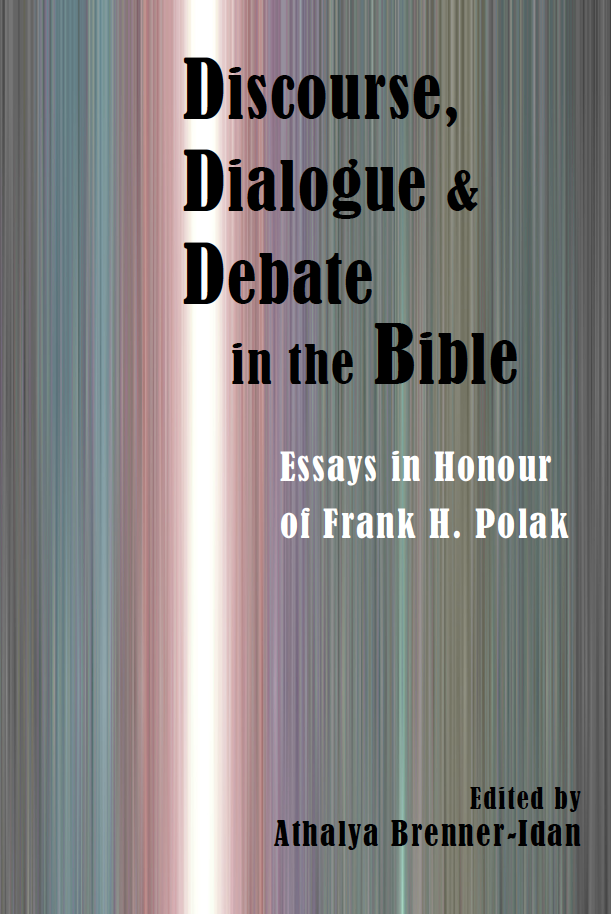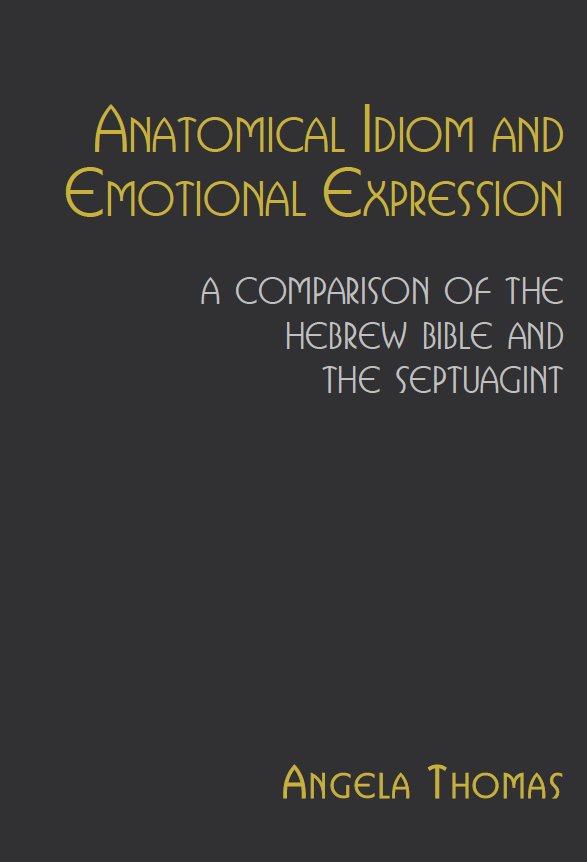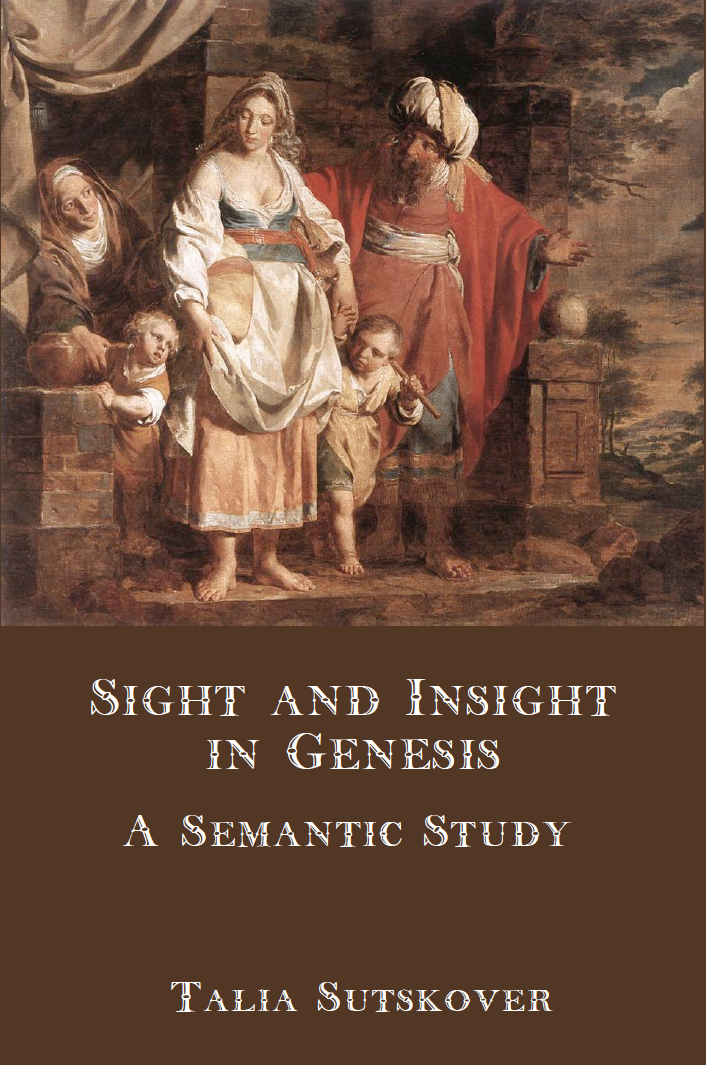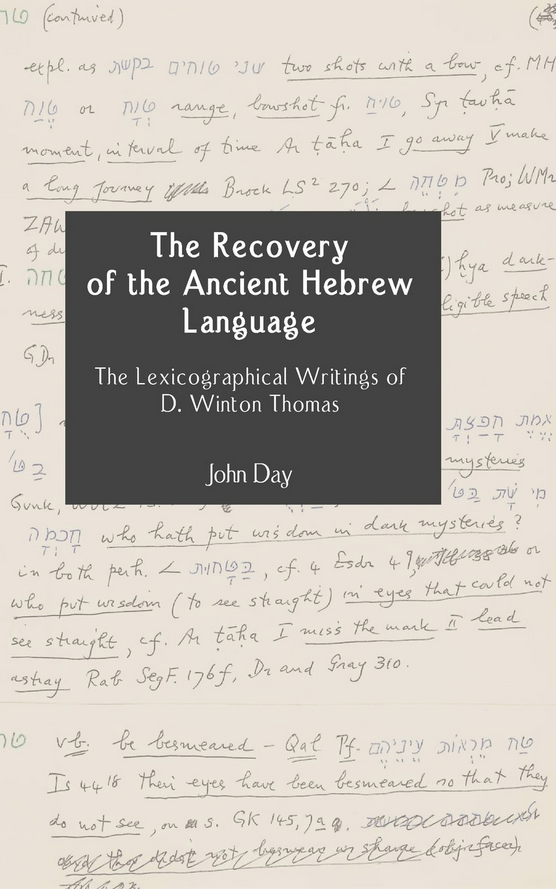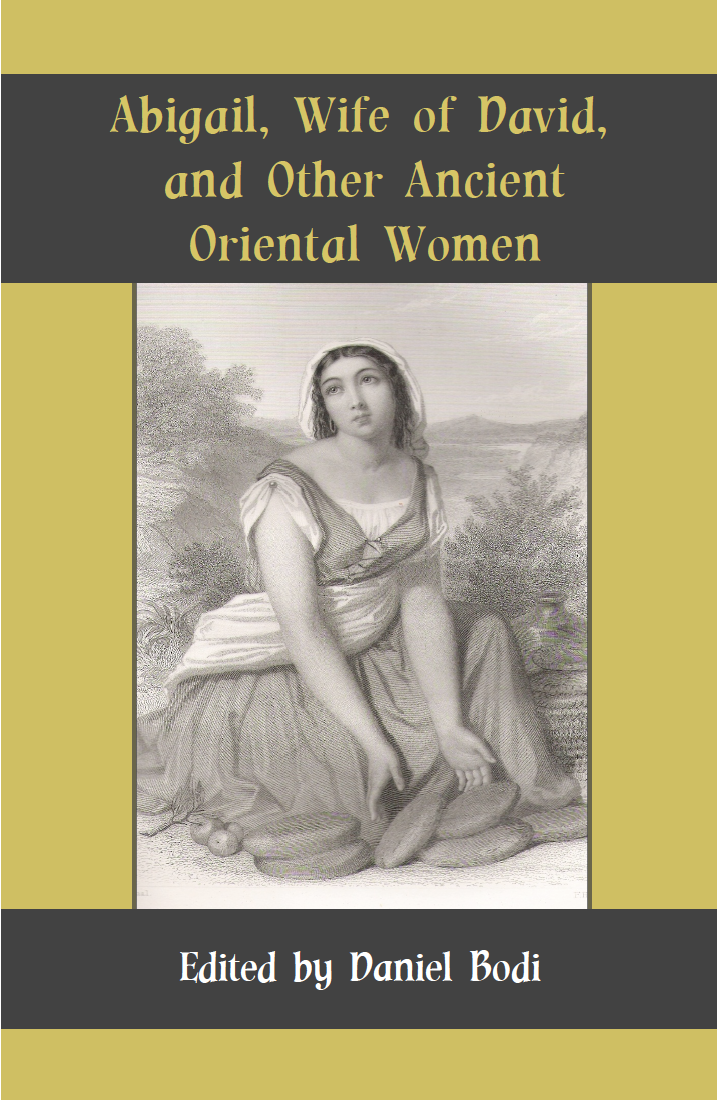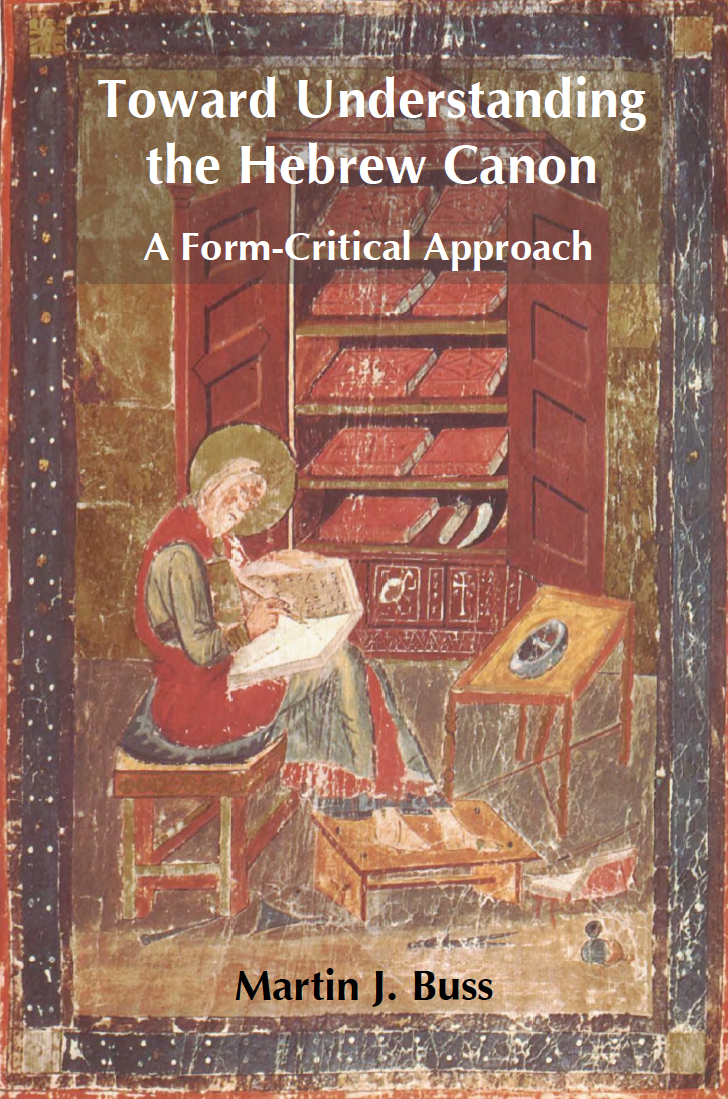Sale
Biblical Rhetoric and Rhetorical Criticism
Published: Oct 2015
£18.50 – £30.00
This volume will prove a classic textbook on rhetorical criticism in the Bible, especially the Hebrew Bible. Following the lead of the famous Presidential Address to the Society of Biblical Literature in 1968 by James Muilenburg, 'Form Criticism and Beyond', Jack Lundbom has for over 40 years been developing and shaping the field with a stream of papers. 26 of them (three not previously published) are gathered into this volume.
Hebrew rhetoric has a long history, reaching back even into the early Israelite period. Recognition of rhetorical elements in the Bible can be seen in Hillel, Augustine, ibn Ezra, and Calvin, as well as among certain biblical scholars of the 18th and 19th centuries. But the revival of rhetoric and the modern method of rhetorical criticism is more recent, having begun in America among classical scholars in the early 1900s, and having been widely adopted by biblical scholars in the last third of the twentieth century. Biblical scholars today invariably have rhetorical criticism in their exegetical toolbox, but the field lacks such a comprehensive corpus of studies as the present volume supplies.
Reading the Bible with an eye to the rhetorical nature of its discourse —not just the style, but its structures and modes of argumentation —gives one a sharpened view of biblical figures, their legacy, and much else in the biblical text. One also gets new insight into the audiences for whom biblical messages were originally intended. Rhetorical criticism offers a ready yield for all those seeking a closer understanding of the biblical texts.
Sale
Biblical Rhetoric and Rhetorical Criticism
£18.50 – £30.00
This volume will prove a classic textbook on rhetorical criticism in the Bible, especially the Hebrew Bible. Following the lead of the famous Presidential Address to the Society of Biblical Literature in 1968 by James Muilenburg, 'Form Criticism and Beyond', Jack Lundbom has for over 40 years been developing and shaping the field with a stream of papers. 26 of them (three not previously published) are gathered into this volume.
Hebrew rhetoric has a long history, reaching back even into the early Israelite period. Recognition of rhetorical elements in the Bible can be seen in Hillel, Augustine, ibn Ezra, and Calvin, as well as among certain biblical scholars of the 18th and 19th centuries. But the revival of rhetoric and the modern method of rhetorical criticism is more recent, having begun in America among classical scholars in the early 1900s, and having been widely adopted by biblical scholars in the last third of the twentieth century. Biblical scholars today invariably have rhetorical criticism in their exegetical toolbox, but the field lacks such a comprehensive corpus of studies as the present volume supplies.
Reading the Bible with an eye to the rhetorical nature of its discourse —not just the style, but its structures and modes of argumentation —gives one a sharpened view of biblical figures, their legacy, and much else in the biblical text. One also gets new insight into the audiences for whom biblical messages were originally intended. Rhetorical criticism offers a ready yield for all those seeking a closer understanding of the biblical texts.
Sale
The World of the Child in the Hebrew Bible
Published: Oct 2015
£16.50 – £20.00
The question 'What is a child?' is not easily answered. To make us aware of the multiple factors that contribute to the social construction of childhood in the Hebrew Bible, Naomi Steinberg draws on ethno-historical evidence and incorporates the insights of contemporary social studies of childhood. Through close readings of Genesis 21, 1 Samuel 1 and Exodus 21.22-25, she argues that chronological age and biological immaturity do not determine the boundaries of childhood in biblical Israel.
The social constructions of childhood in the Hebrew Bible were based on what the child could do for the parent, not vice versa. Children were their parents' property and were used to fulfil their parents' desires and needs. Not all children had the same experiences of childhood, of course. For example, whether a child was born into a monogamous or polygamous family shaped the course of its future. Other relevant factors in the construction of the multiplicities of childhoods included gender, birth order, and the socio-political historical contexts of ancient Israel. Steinberg convincingly corrects the notion that childhood is a static category in the human life cycle, showing that meanings of childhood are not generic and cannot be carried over from one society to another.
This fascinating study, in which the author draws fruitfully on her personal cross-cultural experience of children's lives in Guatemala, exposes the reality that childhood in the Hebrew Bible was radically different from present-day childhood.
Sale
The World of the Child in the Hebrew Bible
£16.50 – £20.00
The question 'What is a child?' is not easily answered. To make us aware of the multiple factors that contribute to the social construction of childhood in the Hebrew Bible, Naomi Steinberg draws on ethno-historical evidence and incorporates the insights of contemporary social studies of childhood. Through close readings of Genesis 21, 1 Samuel 1 and Exodus 21.22-25, she argues that chronological age and biological immaturity do not determine the boundaries of childhood in biblical Israel.
The social constructions of childhood in the Hebrew Bible were based on what the child could do for the parent, not vice versa. Children were their parents' property and were used to fulfil their parents' desires and needs. Not all children had the same experiences of childhood, of course. For example, whether a child was born into a monogamous or polygamous family shaped the course of its future. Other relevant factors in the construction of the multiplicities of childhoods included gender, birth order, and the socio-political historical contexts of ancient Israel. Steinberg convincingly corrects the notion that childhood is a static category in the human life cycle, showing that meanings of childhood are not generic and cannot be carried over from one society to another.
This fascinating study, in which the author draws fruitfully on her personal cross-cultural experience of children's lives in Guatemala, exposes the reality that childhood in the Hebrew Bible was radically different from present-day childhood.
Sale
Solomon the Lover and the Shape of the Song of Songs
Published: Sep 2015
Original price was: £50.00.£18.50Current price is: £18.50.
Reading the Song of Songs perpetually raises the question, What is this love that has been sung about so evocatively to ever new generations? The exuberance of the poetry and the remarkable history of its reception make the understanding of what the poetry is all about the more urgent for the conscientious reader.
The shape of the Song and what this shape reveals of the poet's concerns are central for this study. Hauge's analysis discloses that a special arrangement of formally independent units, signalled by effects of repetition, is typical of its composition. The strophes are set out in a fivefold pattern containing three types of passage: narrative elements, addresses to the daughters of Jerusalem, and dialogues between the lovers.
The tension of the opening scenes dedicated to Solomon and his women, contrasted with a final scene where the king is the humble supplicant, reflects an underlying story of how Solomon the lover of many women was transformed into a lover of the One. The story is dedicated to the power of love, its character as an overwhelming force being even accented by implications of shame. Motifs of absence and separation suggest longing as the essence of love, the final image of the lover as the hart upon the fragrant mountains adding a tinge of sadness to the impression.
Themes from the Solomon tradition are important for the narrative strand. The formal shape and the cast of actors are deeply influenced by Proverbs 1 —7, not least when the poet plays havoc with venerable aspects of the wisdom tradition.
Sale
Solomon the Lover and the Shape of the Song of Songs
Original price was: £50.00.£18.50Current price is: £18.50.
Reading the Song of Songs perpetually raises the question, What is this love that has been sung about so evocatively to ever new generations? The exuberance of the poetry and the remarkable history of its reception make the understanding of what the poetry is all about the more urgent for the conscientious reader.
The shape of the Song and what this shape reveals of the poet's concerns are central for this study. Hauge's analysis discloses that a special arrangement of formally independent units, signalled by effects of repetition, is typical of its composition. The strophes are set out in a fivefold pattern containing three types of passage: narrative elements, addresses to the daughters of Jerusalem, and dialogues between the lovers.
The tension of the opening scenes dedicated to Solomon and his women, contrasted with a final scene where the king is the humble supplicant, reflects an underlying story of how Solomon the lover of many women was transformed into a lover of the One. The story is dedicated to the power of love, its character as an overwhelming force being even accented by implications of shame. Motifs of absence and separation suggest longing as the essence of love, the final image of the lover as the hart upon the fragrant mountains adding a tinge of sadness to the impression.
Themes from the Solomon tradition are important for the narrative strand. The formal shape and the cast of actors are deeply influenced by Proverbs 1 —7, not least when the poet plays havoc with venerable aspects of the wisdom tradition.
Sale
Adam, Eve, and the Devil: A New Beginning, Second Enlarged Edition
Published: Aug 2015
£18.50 – £27.00
In this book the authors develop an intriguing theory about the Canaanite origin of the biblical traditions concerning the origin of the cosmos and the creation of humankind. Adam, Eve, and the Devil tells a new story about human beginnings and at the same time proposes a fresh start for biblical research into primordial traditions.
A number of clay tablets from Ugarit, dating from the late thirteenth century BCE, throw new light, Korpel and de Moor argue, on the background of the first chapters of Genesis and the myth of Adam. In these tablets, El, the creator deity, and his wife Asherah lived in a vineyard or garden on the slopes of Mt Ararat, known in the Bible as the mountain where Noah's ark came to rest. The first sinner was not a human being, but an evil god called Horon who wanted to depose El. Horon was thrown down from the mountain of the gods, and in revenge he transformed the Tree of Life in the garden into a Tree of Death and enveloped the whole world in a poisonous fog. Adam was sent down to restore life on earth, but failed because Horon in the form of a huge serpent bit him. As a result Adam and his wife lost their immortality.
This myth found its way into the Bible, the Apocrypha and the Pseudepigraphical literature, though it was often transformed or treated critically. Adam, Eve, and the Devil traces the reception of the myth in its many forms, and also presents the oldest pictures of Adam and Eve ever identified (one of them on the front cover of the book). A second, enlarged edition is published in paperback in August, 2015.
Sale
Adam, Eve, and the Devil: A New Beginning, Second Enlarged Edition
£18.50 – £27.00
In this book the authors develop an intriguing theory about the Canaanite origin of the biblical traditions concerning the origin of the cosmos and the creation of humankind. Adam, Eve, and the Devil tells a new story about human beginnings and at the same time proposes a fresh start for biblical research into primordial traditions.
A number of clay tablets from Ugarit, dating from the late thirteenth century BCE, throw new light, Korpel and de Moor argue, on the background of the first chapters of Genesis and the myth of Adam. In these tablets, El, the creator deity, and his wife Asherah lived in a vineyard or garden on the slopes of Mt Ararat, known in the Bible as the mountain where Noah's ark came to rest. The first sinner was not a human being, but an evil god called Horon who wanted to depose El. Horon was thrown down from the mountain of the gods, and in revenge he transformed the Tree of Life in the garden into a Tree of Death and enveloped the whole world in a poisonous fog. Adam was sent down to restore life on earth, but failed because Horon in the form of a huge serpent bit him. As a result Adam and his wife lost their immortality.
This myth found its way into the Bible, the Apocrypha and the Pseudepigraphical literature, though it was often transformed or treated critically. Adam, Eve, and the Devil traces the reception of the myth in its many forms, and also presents the oldest pictures of Adam and Eve ever identified (one of them on the front cover of the book). A second, enlarged edition is published in paperback in August, 2015.
Sale
‘For She Has Heard’: The Standing Stone in Joshua 24 and the Development of a Covenant Symbol
Published: Aug 2015
Original price was: £50.00.£20.00Current price is: £20.00.
In this unusual and fascinating study, Elizabeth Berne DeGear draws on both biblical studies and psychoanalytic theory to interpret the role of the standing stone erected by Joshua in the sanctuary at Shechem.
The presence of a listening stone in the sanctuary distinguishes the ritual space in Joshua 24, yet this religious symbol has received little scholarly attention. DeGear begins with the question: What is this numinous feminine presence serving as witness to the people's covenantal relationship with their God? Comparing this stone's function with the function of other covenant stones in the Hebrew Bible and throughout the ancient Near East, DeGear illuminates both the power of the symbol and its dynamics in the people's religious development.
In psychoanalytic mode, DeGear goes on to show how humans create and use symbols differently at various positions along the path to maturity. Her study presents a new perspective on how covenant symbols in the Hebrew Bible function in the development of the communities using them. The present analysis of this one biblical symbol offers scholars and students of biblical and religious studies the tools to engage in psychologically informed consideration of covenant.
With its focus on sanctuary, symbol and psyche, DeGear's exploration of the stone extends from the world of ancient Israel to today's worship communities, where the Bible itself is used as a covenant symbol. What emerges is a picture of how the standing stone and other mediating symbols function in the religion of communities in the Bible and beyond.
Sale
‘For She Has Heard’: The Standing Stone in Joshua 24 and the Development of a Covenant Symbol
Original price was: £50.00.£20.00Current price is: £20.00.
In this unusual and fascinating study, Elizabeth Berne DeGear draws on both biblical studies and psychoanalytic theory to interpret the role of the standing stone erected by Joshua in the sanctuary at Shechem.
The presence of a listening stone in the sanctuary distinguishes the ritual space in Joshua 24, yet this religious symbol has received little scholarly attention. DeGear begins with the question: What is this numinous feminine presence serving as witness to the people's covenantal relationship with their God? Comparing this stone's function with the function of other covenant stones in the Hebrew Bible and throughout the ancient Near East, DeGear illuminates both the power of the symbol and its dynamics in the people's religious development.
In psychoanalytic mode, DeGear goes on to show how humans create and use symbols differently at various positions along the path to maturity. Her study presents a new perspective on how covenant symbols in the Hebrew Bible function in the development of the communities using them. The present analysis of this one biblical symbol offers scholars and students of biblical and religious studies the tools to engage in psychologically informed consideration of covenant.
With its focus on sanctuary, symbol and psyche, DeGear's exploration of the stone extends from the world of ancient Israel to today's worship communities, where the Bible itself is used as a covenant symbol. What emerges is a picture of how the standing stone and other mediating symbols function in the religion of communities in the Bible and beyond.
Sale
Imagination, Ideology and Inspiration: Echoes of Brueggemann in a New Generation
Published: Aug 2015
Original price was: £60.00.£20.00Current price is: £20.00.
By any account, Walter Brueggemann stands as one of the foremost interpreters of the Hebrew Bible of the past half-century. Yet the question remains of what his influence will be on the next generation of biblical scholars, who have learned from Brueggemann and taken his work in new and often surprising directions. This volume engages that question by presenting the work of fourteen of Brueggemann's former students at Columbia Theological Seminary (Decatur, Georgia) who are now biblical scholars in their own right, asking how his influence has been received and transformed by them.
Essays in this volume present imaginative new readings of well-known texts, from the crisis of God in Genesis 22 to God's birthing body in Job 38. They engage the ideology of the text, discovering the voice of a female prophet in the book of Isaiah, a Job in drag, and a feminist Qohelet. They grapple with the implications of the text for contemporary life, from reading Lamentations after Hiroshima to considering how the production of Bibles is an act of ideological control. While clearly resonating with Brueggemann's work, these essays also take his influence in new directions, from deeper engagement with rabbinic interpretation to the incorporation of new theoretical perspectives from Lacan to Žižek to Deleuze and Guattari.
An introduction by Brent Strawn considers Brueggemann's influence in the field more generally, while a response from Carolyn Sharp offers soundings for a new generation of scholars.
Sale
Imagination, Ideology and Inspiration: Echoes of Brueggemann in a New Generation
Original price was: £60.00.£20.00Current price is: £20.00.
By any account, Walter Brueggemann stands as one of the foremost interpreters of the Hebrew Bible of the past half-century. Yet the question remains of what his influence will be on the next generation of biblical scholars, who have learned from Brueggemann and taken his work in new and often surprising directions. This volume engages that question by presenting the work of fourteen of Brueggemann's former students at Columbia Theological Seminary (Decatur, Georgia) who are now biblical scholars in their own right, asking how his influence has been received and transformed by them.
Essays in this volume present imaginative new readings of well-known texts, from the crisis of God in Genesis 22 to God's birthing body in Job 38. They engage the ideology of the text, discovering the voice of a female prophet in the book of Isaiah, a Job in drag, and a feminist Qohelet. They grapple with the implications of the text for contemporary life, from reading Lamentations after Hiroshima to considering how the production of Bibles is an act of ideological control. While clearly resonating with Brueggemann's work, these essays also take his influence in new directions, from deeper engagement with rabbinic interpretation to the incorporation of new theoretical perspectives from Lacan to Žižek to Deleuze and Guattari.
An introduction by Brent Strawn considers Brueggemann's influence in the field more generally, while a response from Carolyn Sharp offers soundings for a new generation of scholars.
Sale
Sin, Impurity, Sacrifice, Atonement: The Priestly Conceptions
Published: May 2015
£15.00 – £20.00
The goal of this closely reasoned study is to explain why, in Priestly texts of the Hebrew Bible, the verb kipper, traditionally translated 'atone', means the way of dealing both with sin and with impurity —which might seem very different things.
Sklar's first key conclusion is that when the context is sin, certain sins also pollute; so 'atonement' may include some element of purification. His second conclusion is that, when the context is impurity, and kipper means not 'atone' but 'effect purgation', impurity also endangers; so kipper can include some element of ransoming.
In fact, sin and impurity, while distinct categories in themselves, have this in common: each of them requires both ransoming and purification. It is for this reason that kipper can be used in both settings.
This benchmark study concludes with a careful examination of the famous sentence of Leviticus 17.11 that 'blood makes atonement' (kipper) and explains how, in the Priestly ideology, blood sacrifice was able to accomplish both ransom and purification.
Sale
Sin, Impurity, Sacrifice, Atonement: The Priestly Conceptions
£15.00 – £20.00
The goal of this closely reasoned study is to explain why, in Priestly texts of the Hebrew Bible, the verb kipper, traditionally translated 'atone', means the way of dealing both with sin and with impurity —which might seem very different things.
Sklar's first key conclusion is that when the context is sin, certain sins also pollute; so 'atonement' may include some element of purification. His second conclusion is that, when the context is impurity, and kipper means not 'atone' but 'effect purgation', impurity also endangers; so kipper can include some element of ransoming.
In fact, sin and impurity, while distinct categories in themselves, have this in common: each of them requires both ransoming and purification. It is for this reason that kipper can be used in both settings.
This benchmark study concludes with a careful examination of the famous sentence of Leviticus 17.11 that 'blood makes atonement' (kipper) and explains how, in the Priestly ideology, blood sacrifice was able to accomplish both ransom and purification.
Sale
Interpreting the Text: Essays on the Old Testament, its Reception and its Study, edited by Walter J. Houston and Adrian H.W. Curtis
Published: Apr 2015
Original price was: £60.00.£20.00Current price is: £20.00.
Roger Tomes (1928 —2011) was a well-known British scholar of the Old Testament, wide-ranging in his interests and meticulous in his scholarship. He was particularly productive after his retirement from his post at Northern College, Manchester, an interdenominational college for ministry training and theological study, and remained an Honorary Research Fellow at the University of Manchester.
He excelled in the conference paper or journal article form, but made no collection of his papers in his lifetime. Two of his Manchester colleagues have here made a selection from both his published essays and his unpublished papers, many of them delivered in the last few years to the Ehrhardt Seminar for biblical research in Manchester. Tomes was always concerned with the relevance of the Bible to the life of the Church, and the earliest essay in the volume, from 1969, is a contribution to the theology of the Old Testament. Others deal with the reception of biblical criticism in theological education in the nineteenth and early twentieth centuries. One of Tomes's abiding concerns was with Jewish —Christian relations; his interests in Jewish interpretation are reflected here in a study of the rabbinic use of the book of Jeremiah, and an essay on the Jewish American poet Emma Lazarus. He was working on the reception history of the story of David at the time of his death, and the fruits of that study are included in the form of two fascinating essays. Besides all this, the book covers a range of topics in the study of the Old Testament, including the deutero-canonical writings, its law and historical writings in particular.
Sale
Interpreting the Text: Essays on the Old Testament, its Reception and its Study, edited by Walter J. Houston and Adrian H.W. Curtis
Original price was: £60.00.£20.00Current price is: £20.00.
Roger Tomes (1928 —2011) was a well-known British scholar of the Old Testament, wide-ranging in his interests and meticulous in his scholarship. He was particularly productive after his retirement from his post at Northern College, Manchester, an interdenominational college for ministry training and theological study, and remained an Honorary Research Fellow at the University of Manchester.
He excelled in the conference paper or journal article form, but made no collection of his papers in his lifetime. Two of his Manchester colleagues have here made a selection from both his published essays and his unpublished papers, many of them delivered in the last few years to the Ehrhardt Seminar for biblical research in Manchester. Tomes was always concerned with the relevance of the Bible to the life of the Church, and the earliest essay in the volume, from 1969, is a contribution to the theology of the Old Testament. Others deal with the reception of biblical criticism in theological education in the nineteenth and early twentieth centuries. One of Tomes's abiding concerns was with Jewish —Christian relations; his interests in Jewish interpretation are reflected here in a study of the rabbinic use of the book of Jeremiah, and an essay on the Jewish American poet Emma Lazarus. He was working on the reception history of the story of David at the time of his death, and the fruits of that study are included in the form of two fascinating essays. Besides all this, the book covers a range of topics in the study of the Old Testament, including the deutero-canonical writings, its law and historical writings in particular.
Sale
The Ancient Near East in the Nineteenth Century: I. Claiming and Conquering
Published: Apr 2015
£19.50 – £30.00
At the beginning of the nineteenth century, little was known of the ancient Near East except for what was preserved in the Bible and Classical literature. By the end of that century, an amazing transformation had occurred: the basic outline of ancient Near Eastern history was now understood and the material culture of the region was recognizable to the general public. This three-volume study explores the various ways by which non-specialists would have encountered ancient Egypt, Mesopotamia, and the Holy Land and how they derived and constructed meaning from those discoveries. McGeough challenges the simplistic view that the experience of the ancient Near East was solely a matter of 'othering' and shows how different people claimed the Near East as their own space and how connections were drawn between the ancient and contemporary worlds.
Volume I traces how the study of the ancient Near East developed into a professional discipline and how interpretative frameworks were gradually standardized throughout the nineteenth century. Some of the best-sellers of the period were accounts of the early explorers of the region and, beginning with the Napoleonic expedition, the book examines how ancient Near Eastern discoveries were communicated to the public. It looks at how archaeological reporting was shaped in this period and how the study of the ancient Near East was employed to understand issues of progress and decline and was referenced in the political and social satire of the period. It also documents the growth of middle-class tourism to the region and considers how the changing experiences of travel impacted Near Eastern studies. Throughout, the book observes how the ancient Near East mirrored and subverted British society and played a role in European and North American thinking about their places in a larger global and historical perspective.
Sale
The Ancient Near East in the Nineteenth Century: I. Claiming and Conquering
£19.50 – £30.00
At the beginning of the nineteenth century, little was known of the ancient Near East except for what was preserved in the Bible and Classical literature. By the end of that century, an amazing transformation had occurred: the basic outline of ancient Near Eastern history was now understood and the material culture of the region was recognizable to the general public. This three-volume study explores the various ways by which non-specialists would have encountered ancient Egypt, Mesopotamia, and the Holy Land and how they derived and constructed meaning from those discoveries. McGeough challenges the simplistic view that the experience of the ancient Near East was solely a matter of 'othering' and shows how different people claimed the Near East as their own space and how connections were drawn between the ancient and contemporary worlds.
Volume I traces how the study of the ancient Near East developed into a professional discipline and how interpretative frameworks were gradually standardized throughout the nineteenth century. Some of the best-sellers of the period were accounts of the early explorers of the region and, beginning with the Napoleonic expedition, the book examines how ancient Near Eastern discoveries were communicated to the public. It looks at how archaeological reporting was shaped in this period and how the study of the ancient Near East was employed to understand issues of progress and decline and was referenced in the political and social satire of the period. It also documents the growth of middle-class tourism to the region and considers how the changing experiences of travel impacted Near Eastern studies. Throughout, the book observes how the ancient Near East mirrored and subverted British society and played a role in European and North American thinking about their places in a larger global and historical perspective.
Sale
Text, Time, and Temple: Literary, Historical and Ritual Studies in Leviticus
Published: Mar 2015
Original price was: £60.00.£20.00Current price is: £20.00.
In their different ways the essays in this collection ask, Why was Leviticus written? What is the relation of text to practice, and to the development of the idea of an Israelite society centred in its Temple through all vicissitudes of its history?
The thirteen contributors are engaged in exploring the intersection of literary, historical and ritual approaches to Leviticus, as the central book of the Torah and as a utopian vision of an ideal society. Leading scholars of Leviticus and the Pentateuch, like James Watts, Israel Knohl and Christophe Nihan, combine with others whose primary interest is magic, reception, cultural memory and gender.
The collection begins with a chapter by Michael Hundley on the ancient Near Eastern background of the priestly code and the issue of divine fluidity. Several scholars consider the social function of the book, particularly in the Second Temple period. James Watts, for instance, thinks that it combats scepticism about the efficacy of ritual; Reinhard MÌ_ller argues that the 'I am Yhwh' formula locates the texts in a liturgical setting. Christophe Nihan discusses the manipulation of blood in sacrifice as having an indexical function, as part of the 'templization' of Israel.
Other chapters engage in analyses of particular texts. Leigh Trevaskis advocates a symbolic interpretation of the prohibition of intercourse with a menstruant. Deborah Rooke analyses the gender and ethnic implications of the story of the blasphemer in Leviticus 24. Similarly, Francis Landy compares the chapters on the Nazirite and the woman suspected of adultery as challenges to the sacerdotal order. Jonathan Burnside argues that the prohibition of necromancy is integral to Leviticus 20. The book concludes with a moving reflection by Jeremy Milgrom on his father's views on the ethical implications of his work, and particularly its relevance to Israeli —Palestinian relations.
Sale
Text, Time, and Temple: Literary, Historical and Ritual Studies in Leviticus
Original price was: £60.00.£20.00Current price is: £20.00.
In their different ways the essays in this collection ask, Why was Leviticus written? What is the relation of text to practice, and to the development of the idea of an Israelite society centred in its Temple through all vicissitudes of its history?
The thirteen contributors are engaged in exploring the intersection of literary, historical and ritual approaches to Leviticus, as the central book of the Torah and as a utopian vision of an ideal society. Leading scholars of Leviticus and the Pentateuch, like James Watts, Israel Knohl and Christophe Nihan, combine with others whose primary interest is magic, reception, cultural memory and gender.
The collection begins with a chapter by Michael Hundley on the ancient Near Eastern background of the priestly code and the issue of divine fluidity. Several scholars consider the social function of the book, particularly in the Second Temple period. James Watts, for instance, thinks that it combats scepticism about the efficacy of ritual; Reinhard MÌ_ller argues that the 'I am Yhwh' formula locates the texts in a liturgical setting. Christophe Nihan discusses the manipulation of blood in sacrifice as having an indexical function, as part of the 'templization' of Israel.
Other chapters engage in analyses of particular texts. Leigh Trevaskis advocates a symbolic interpretation of the prohibition of intercourse with a menstruant. Deborah Rooke analyses the gender and ethnic implications of the story of the blasphemer in Leviticus 24. Similarly, Francis Landy compares the chapters on the Nazirite and the woman suspected of adultery as challenges to the sacerdotal order. Jonathan Burnside argues that the prohibition of necromancy is integral to Leviticus 20. The book concludes with a moving reflection by Jeremy Milgrom on his father's views on the ethical implications of his work, and particularly its relevance to Israeli —Palestinian relations.
Sale
Discourse, Dialogue, and Debate in the Bible: Essays in Honour of Frank H. Polak
Published: Aug 2014
Original price was: £70.00.£25.00Current price is: £25.00.
Frank H. Polak's contributions to Biblical Studies cover many fields, from Septuagint and Qumran studies to many other disciplines. His most important contributions in recent decades, however, have been to the narrative criticism and discourse analysis of the Bible, including their application to issues of date and authorship, which have been debated since ancient times.
Polak's work is informed by many branches of general and Semitic linguistics, social anthropology and historiography, along with a broad, humanistic approach. In his work, he has attempted to balance literary, linguistic and historical criticism in order to achieve a synthesis of these separate but overlapping fields, all of them necessary for reading the Hebrew Bible in a responsible manner.
This volume is offered to Frank by friends and colleagues from Tel Aviv University, where he has taught for almost 40 years, and from other academic institutions, in honour of his illustrious career and on the occasion of his retirement from teaching. The contributors all debate questions of discourse, dialogue, language and history —questions that have been central to Frank's researches over the years.
This is the seventh volume of the Amsterdam Studies in the Bible and Religion (ed. Athalya Brenner-Idan), a sub-series of the Bible in the Modern World and Hebrew Bible Monographs.
Sale
Discourse, Dialogue, and Debate in the Bible: Essays in Honour of Frank H. Polak
Original price was: £70.00.£25.00Current price is: £25.00.
Frank H. Polak's contributions to Biblical Studies cover many fields, from Septuagint and Qumran studies to many other disciplines. His most important contributions in recent decades, however, have been to the narrative criticism and discourse analysis of the Bible, including their application to issues of date and authorship, which have been debated since ancient times.
Polak's work is informed by many branches of general and Semitic linguistics, social anthropology and historiography, along with a broad, humanistic approach. In his work, he has attempted to balance literary, linguistic and historical criticism in order to achieve a synthesis of these separate but overlapping fields, all of them necessary for reading the Hebrew Bible in a responsible manner.
This volume is offered to Frank by friends and colleagues from Tel Aviv University, where he has taught for almost 40 years, and from other academic institutions, in honour of his illustrious career and on the occasion of his retirement from teaching. The contributors all debate questions of discourse, dialogue, language and history —questions that have been central to Frank's researches over the years.
This is the seventh volume of the Amsterdam Studies in the Bible and Religion (ed. Athalya Brenner-Idan), a sub-series of the Bible in the Modern World and Hebrew Bible Monographs.
Sale
Anatomical Idiom and Emotional Expression: A Comparison of the Hebrew Bible and the Septuagint
Published: May 2014
Original price was: £75.00.£20.00Current price is: £20.00.
The Hebrew Bible abounds in imagery linking feelings and emotions with various parts of the body. These vividly painted word pictures capture the imagination, and the reader can identify physically as well as emotionally with what is being expressed. But this colourful imagery, with its forthright and earthy language, is rather less apparent in modern English translations.
Such substitutions are not just common in English translations, but are also found in the first authorized translation of the Hebrew Bible, the Septuagint. Can the changes to body imagery found in English translations be explained as part of a process that began with the Greek text, which often gave a more muted picture than the Hebrew original?
This study explores these questions by making a detailed comparative analysis of anatomical idioms (body imagery) associated with the emotions of distress, fear, anger and gladness in the Hebrew Bible and the Septuagint. Differences are identified through literal translation into English from both Hebrew and Greek and the results are categorized, discussed and analysed, and detailed statistical information is presented. The data offer a rich resource for further research, and the analysis provides fascinating insights into the minds of the Greek translators and findings that are surprisingly complex.
Sale
Anatomical Idiom and Emotional Expression: A Comparison of the Hebrew Bible and the Septuagint
Original price was: £75.00.£20.00Current price is: £20.00.
The Hebrew Bible abounds in imagery linking feelings and emotions with various parts of the body. These vividly painted word pictures capture the imagination, and the reader can identify physically as well as emotionally with what is being expressed. But this colourful imagery, with its forthright and earthy language, is rather less apparent in modern English translations.
Such substitutions are not just common in English translations, but are also found in the first authorized translation of the Hebrew Bible, the Septuagint. Can the changes to body imagery found in English translations be explained as part of a process that began with the Greek text, which often gave a more muted picture than the Hebrew original?
This study explores these questions by making a detailed comparative analysis of anatomical idioms (body imagery) associated with the emotions of distress, fear, anger and gladness in the Hebrew Bible and the Septuagint. Differences are identified through literal translation into English from both Hebrew and Greek and the results are categorized, discussed and analysed, and detailed statistical information is presented. The data offer a rich resource for further research, and the analysis provides fascinating insights into the minds of the Greek translators and findings that are surprisingly complex.
Sale
Sight and Insight in Genesis: A Semantic Study
Published: Oct 2013
Original price was: £60.00.£20.00Current price is: £20.00.
Sight and Insight shows how prominent are terms from the semantic field of sight in the book of Genesis. They are constantly found in openings, at turning points, and as constituents in place-names and personal names. Because of their presence at strategic points in the plot of Genesis, words of sight enhance cohesion among the narratives of the book.
From the beginning of time, according to Genesis, there have been numerous instances of seeing on the part of both God and humans. But as Genesis progresses, God gradually becomes more hidden and his seeing gives place to human perception.
These observations are built upon a sound theoretical foundation, outlined in the opening chapter, which provides a clear definition of the concept of 'semantic field' and an explanation of related semantic terms such as 'frames' and 'prototypes'.
Subsequent chapters identify the words that can be assigned to the 'sight' field, examine the deployment of the sight field in individual narratives in Genesis, and study the sight field over larger sections of the book.
This is the sixth volume of the Amsterdam Studies in the Bible and Religion (ed. Athalya Brenner), a sub-series of the Bible in the Modern World and Hebrew Bible Monographs.
Sale
Sight and Insight in Genesis: A Semantic Study
Original price was: £60.00.£20.00Current price is: £20.00.
Sight and Insight shows how prominent are terms from the semantic field of sight in the book of Genesis. They are constantly found in openings, at turning points, and as constituents in place-names and personal names. Because of their presence at strategic points in the plot of Genesis, words of sight enhance cohesion among the narratives of the book.
From the beginning of time, according to Genesis, there have been numerous instances of seeing on the part of both God and humans. But as Genesis progresses, God gradually becomes more hidden and his seeing gives place to human perception.
These observations are built upon a sound theoretical foundation, outlined in the opening chapter, which provides a clear definition of the concept of 'semantic field' and an explanation of related semantic terms such as 'frames' and 'prototypes'.
Subsequent chapters identify the words that can be assigned to the 'sight' field, examine the deployment of the sight field in individual narratives in Genesis, and study the sight field over larger sections of the book.
This is the sixth volume of the Amsterdam Studies in the Bible and Religion (ed. Athalya Brenner), a sub-series of the Bible in the Modern World and Hebrew Bible Monographs.
Sale
Chorus in the Dark: The Voices of the Book of Lamentations
Published: Oct 2013
Original price was: £60.00.£20.00Current price is: £20.00.
Chorus in the Dark invites attention to the treaty negotiated by the voices of Lamentations. The issues of God's justice and human rights are at the centre of a forceful discussion embodied in the five poems of Lamentations. Difficult questions are subtly raised: How can God's justice be recognized and honoured in the midst of suffering? How can the human right to protest against mistreatment be respected? How can loss, grief, and shame be overcome? What future is there for the victims? How can these sensitive issues be negotiated without loss?
Zion is the first major speaker in Lamentations. Zion projects the voice of a woman crying by the grave. Her pain is intense, her loss is vast, her anger is uncontrollable. Zion is unable to see any future. God is indeed just in destroying her, but her surviving children do not deserve her fate.
The other major speaker is the man of Lamentations 3. He too speaks of the pain, grief, anger, and desire for vengeance of a victim bent under the yoke of affliction. Yet, like a Davidic king, he dares to claim covenant promises and hope that darkness will eventually turn to light.
Through both harmony and discord, and with a profound ambivalence toward the future, the separate voices of Lamentations resonate in a timbre that transcends the sum of its parts. The five poems, while having unique value individually, are meant to be read together as a living documentation of a moment of suspension, a great turning point in the history of Israel.
Sale
Chorus in the Dark: The Voices of the Book of Lamentations
Original price was: £60.00.£20.00Current price is: £20.00.
Chorus in the Dark invites attention to the treaty negotiated by the voices of Lamentations. The issues of God's justice and human rights are at the centre of a forceful discussion embodied in the five poems of Lamentations. Difficult questions are subtly raised: How can God's justice be recognized and honoured in the midst of suffering? How can the human right to protest against mistreatment be respected? How can loss, grief, and shame be overcome? What future is there for the victims? How can these sensitive issues be negotiated without loss?
Zion is the first major speaker in Lamentations. Zion projects the voice of a woman crying by the grave. Her pain is intense, her loss is vast, her anger is uncontrollable. Zion is unable to see any future. God is indeed just in destroying her, but her surviving children do not deserve her fate.
The other major speaker is the man of Lamentations 3. He too speaks of the pain, grief, anger, and desire for vengeance of a victim bent under the yoke of affliction. Yet, like a Davidic king, he dares to claim covenant promises and hope that darkness will eventually turn to light.
Through both harmony and discord, and with a profound ambivalence toward the future, the separate voices of Lamentations resonate in a timbre that transcends the sum of its parts. The five poems, while having unique value individually, are meant to be read together as a living documentation of a moment of suspension, a great turning point in the history of Israel.
Sale
The Recovery of the Ancient Hebrew Language: The Lexicographical Writings of D. Winton Thomas
Published: Oct 2013
Original price was: £75.00.£25.00Current price is: £25.00.
David Winton Thomas (1901 —1970) was Regius Professor of Hebrew in the University of Cambridge (1938 —1968) and one of the most distinguished British lexicographers of the Hebrew language. His special contribution was the identification of words in Biblical Hebrew that had lain undetected since ancient times, sometimes because they were homonyms of other, better-known words. He called his project 'The Recovery of the Ancient Hebrew Language', the title of his inaugural lecture at Cambridge in 1939, as well as of the present book.
In this volume John Day has gathered together all Winton Thomas's lexicographical articles (nearly 400 pages altogether) in a convenient format; hitherto these have been scattered around many different journals and books. In addition, he has prefaced them with a very substantial introduction of some 150 pages, in which he offers the first thorough and systematic evaluation of Winton Thomas's work.
Day concludes that there are definitely occasions where Thomas has made a positive and enduring contribution to Hebrew lexicography, and it is important that modern scholars do not overlook these conclusions. On the other hand, it becomes clear that Thomas was sometimes too prone to appeal to cognate Semitic languages (especially Arabic) in the search for new meanings of Hebrew words when this was unnecessary. In seeking to make a thorough appraisal of Thomas's proposals this volume offers a valuable contribution to the study of Biblical Hebrew lexicography.
Sale
The Recovery of the Ancient Hebrew Language: The Lexicographical Writings of D. Winton Thomas
Original price was: £75.00.£25.00Current price is: £25.00.
David Winton Thomas (1901 —1970) was Regius Professor of Hebrew in the University of Cambridge (1938 —1968) and one of the most distinguished British lexicographers of the Hebrew language. His special contribution was the identification of words in Biblical Hebrew that had lain undetected since ancient times, sometimes because they were homonyms of other, better-known words. He called his project 'The Recovery of the Ancient Hebrew Language', the title of his inaugural lecture at Cambridge in 1939, as well as of the present book.
In this volume John Day has gathered together all Winton Thomas's lexicographical articles (nearly 400 pages altogether) in a convenient format; hitherto these have been scattered around many different journals and books. In addition, he has prefaced them with a very substantial introduction of some 150 pages, in which he offers the first thorough and systematic evaluation of Winton Thomas's work.
Day concludes that there are definitely occasions where Thomas has made a positive and enduring contribution to Hebrew lexicography, and it is important that modern scholars do not overlook these conclusions. On the other hand, it becomes clear that Thomas was sometimes too prone to appeal to cognate Semitic languages (especially Arabic) in the search for new meanings of Hebrew words when this was unnecessary. In seeking to make a thorough appraisal of Thomas's proposals this volume offers a valuable contribution to the study of Biblical Hebrew lexicography.
Sale
Abigail, Wife of David, and Other Ancient Oriental Women
Published: Oct 2013
Original price was: £50.00.£17.50Current price is: £17.50.
This is the first book devoted to the biblical figure of Abigail, whose encounter with David is narrated in 1 Samuel 25. An interdisciplinary study, its seven papers combine biblical criticism, narratology, history of religions, Assyriology and the study of midrash.
One article (by Michaël Guichard) brings to light a major historical analogy from the Mari documents to the triangular relationship of Abigail, Nabal and David. The career of the princess Inib-sharri, first married to an old sheikh, and, after his sudden, mysterious death, to a younger princeling, provides a very apt analogy to that of Abigail.
Another article (by Daniel Bodi) compares David's way of seizing power to the pattern of seizing power in the ancient Near East: Zimri-Lim in Mari, Idrimi in Alalakh, and the 'Apiru in the Amarna texts serve as analogies to David.
The tale of David as an ambitious warlord taking power through marriage can be paralleled by the myth of Nergal and Ereshkigal; in its older Amarna version Nergal takes power through violence whereas in its Assyrian version his power is due to Ereshkigal's seduction and love. The Abigail story combines both aspects, beginning with violence and ending with marriage (Jean-Jacques Glassner).
Some rabbis saw Abigail as a seducer and a hellish type of woman. The final articles (by Bodi and Jean-Marie Husser) show that, while her behaviour might be ambiguous, she should not be branded a scarlet woman.
Sale
Abigail, Wife of David, and Other Ancient Oriental Women
Original price was: £50.00.£17.50Current price is: £17.50.
This is the first book devoted to the biblical figure of Abigail, whose encounter with David is narrated in 1 Samuel 25. An interdisciplinary study, its seven papers combine biblical criticism, narratology, history of religions, Assyriology and the study of midrash.
One article (by Michaël Guichard) brings to light a major historical analogy from the Mari documents to the triangular relationship of Abigail, Nabal and David. The career of the princess Inib-sharri, first married to an old sheikh, and, after his sudden, mysterious death, to a younger princeling, provides a very apt analogy to that of Abigail.
Another article (by Daniel Bodi) compares David's way of seizing power to the pattern of seizing power in the ancient Near East: Zimri-Lim in Mari, Idrimi in Alalakh, and the 'Apiru in the Amarna texts serve as analogies to David.
The tale of David as an ambitious warlord taking power through marriage can be paralleled by the myth of Nergal and Ereshkigal; in its older Amarna version Nergal takes power through violence whereas in its Assyrian version his power is due to Ereshkigal's seduction and love. The Abigail story combines both aspects, beginning with violence and ending with marriage (Jean-Jacques Glassner).
Some rabbis saw Abigail as a seducer and a hellish type of woman. The final articles (by Bodi and Jean-Marie Husser) show that, while her behaviour might be ambiguous, she should not be branded a scarlet woman.
Sale
Where the Wild Ox Roams: Biblical Essays in Honour of Norman C. Habel
Published: Sep 2013
Original price was: £75.00.£25.00Current price is: £25.00.
Norman C. Habel, the most eminent Hebrew Bible scholar of our time in Australia, has claimed a special place in biblical hermeneutics through his untiring work in the last two decades to foreground environmental issues as the critical lens through which the Bible must be read, judged and interpreted.
This centre of his most recent work has built on a long career of creative engagement with the biblical text, creativity that has witnessed not only major contributions in Hebrew Bible scholarship (most especially on Job and ideologies of 'the land') but in drama, poetry, liturgy, puppetry and music. Norm Habel has demonstrated the possibility of the academic being an activist and the activist being a scholar, all the while encouraging emerging and established scholarship to see further into the text and through the text to the justice demanding to be established in the world.
Seventeen friends have joined to honour the man and esteem, through this collection of essays, some of the illustrious facets of his prodigious output — on Job (Mark Brett, David Clines), ecological hermeneutics (Elaine Wainwright, Vicky Balabanski, Alan Cadwallader, Alice Sinnott, Dianne Bergant, Anne Elvey, Philip Davies), the arts (William Urbrock, Carol Newsom), and issues in personal encounters (Martin Buss, Marie Turner, Robert Crotty, Terence Fretheim, Ralph Klein, Gary Stansell).
Sale
Where the Wild Ox Roams: Biblical Essays in Honour of Norman C. Habel
Original price was: £75.00.£25.00Current price is: £25.00.
Norman C. Habel, the most eminent Hebrew Bible scholar of our time in Australia, has claimed a special place in biblical hermeneutics through his untiring work in the last two decades to foreground environmental issues as the critical lens through which the Bible must be read, judged and interpreted.
This centre of his most recent work has built on a long career of creative engagement with the biblical text, creativity that has witnessed not only major contributions in Hebrew Bible scholarship (most especially on Job and ideologies of 'the land') but in drama, poetry, liturgy, puppetry and music. Norm Habel has demonstrated the possibility of the academic being an activist and the activist being a scholar, all the while encouraging emerging and established scholarship to see further into the text and through the text to the justice demanding to be established in the world.
Seventeen friends have joined to honour the man and esteem, through this collection of essays, some of the illustrious facets of his prodigious output — on Job (Mark Brett, David Clines), ecological hermeneutics (Elaine Wainwright, Vicky Balabanski, Alan Cadwallader, Alice Sinnott, Dianne Bergant, Anne Elvey, Philip Davies), the arts (William Urbrock, Carol Newsom), and issues in personal encounters (Martin Buss, Marie Turner, Robert Crotty, Terence Fretheim, Ralph Klein, Gary Stansell).
Sale
Toward Understanding the Hebrew Canon: A Form-Critical Approach
Published: Sep 2013
Original price was: £50.00.£20.00Current price is: £20.00.
Toward Understanding the Hebrew Canon: A Form-Critical Approach explores in an original and reflective way the relations between the linguistic forms, ideas and life involvements of biblical genres. The various forms of the Hebrew Bible reflect and correspond to the richly diverse life experiences of the Hebrew people, which include varied legal, cultic and erotic interactions.
Divine speech is a prominent literary form in the Hebrew Bible, according to Buss's analysis. It has an emotive character, and is highly personal. Such speech establishes a series of Origin events that run from creation to the foundation of kingship; it both provides norms for life and struggles with human recalcitrance. Divine speech also provides evaluative assessments of present and envisaged situations, and it promises a truly good End. The humans to whom divine speech is directed are called on to acknowledge the divine reality, which they can do through self-transcendence, as a part of selfhood. In ethics, a receptive attitude acknowledges the unconditional worth of others, which is supported by Deity.
Human speech is usually also emotive, although on occasion it is concerned rather with dry historical actualities. It is intertwined with divine speech in narratives and prophecies.
In these fourteen essays (one of them previously unpublished) the renowned biblical scholar Martin Buss gathers an array of his work from many years, bringing to bear on the Hebrew Bible his extensive researches in cross-cultural data and in other disciplines such as philosophy and social psychology.
Sale
Toward Understanding the Hebrew Canon: A Form-Critical Approach
Original price was: £50.00.£20.00Current price is: £20.00.
Toward Understanding the Hebrew Canon: A Form-Critical Approach explores in an original and reflective way the relations between the linguistic forms, ideas and life involvements of biblical genres. The various forms of the Hebrew Bible reflect and correspond to the richly diverse life experiences of the Hebrew people, which include varied legal, cultic and erotic interactions.
Divine speech is a prominent literary form in the Hebrew Bible, according to Buss's analysis. It has an emotive character, and is highly personal. Such speech establishes a series of Origin events that run from creation to the foundation of kingship; it both provides norms for life and struggles with human recalcitrance. Divine speech also provides evaluative assessments of present and envisaged situations, and it promises a truly good End. The humans to whom divine speech is directed are called on to acknowledge the divine reality, which they can do through self-transcendence, as a part of selfhood. In ethics, a receptive attitude acknowledges the unconditional worth of others, which is supported by Deity.
Human speech is usually also emotive, although on occasion it is concerned rather with dry historical actualities. It is intertwined with divine speech in narratives and prophecies.
In these fourteen essays (one of them previously unpublished) the renowned biblical scholar Martin Buss gathers an array of his work from many years, bringing to bear on the Hebrew Bible his extensive researches in cross-cultural data and in other disciplines such as philosophy and social psychology.


